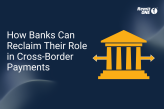The Future of Remittance – The trends and strategies that will shape 2021 February 12, 2021

The World Bank predicted that global remittances would decline by 20% as a direct result of the COVID-19 pandemic in 2020. It remains to be seen if there is any truth to that shocking figure but one thing is for sure – the sector suffered in 2020 and continues to do so in 2021. The question is, are we already on the road to recovery? And if not, how do we get there?
We spoke to three of our clients and partners from three different regions to gather their thoughts and gain some global insight on what lies ahead for the money transfer industry in 2021 – Hugo Cuevas-Mohr, President & CEO of Mohr World Consulting, Walter D’Cruz, CEO of Moneo Solutions and Nadeem Qureshi, CTO at USI Money. Our very own associate sales director Oussama Kseibati quizzed these thought leaders on the key strategies, the technological innovations that might start to emerge and how traditional agent-based MTOs should be reacting to them.
A year of recovery
Oussama began the discussion by reminiscing on how 2020 was a year that necessitated a wider move to digital finance for the entire financial sector: “For remittance, this meant an increase in the use of digital solutions for cross-border payments.” This included a shift to a surprising number of traditionally cash-based agents using digital means to serve clients, with around 60% of domestic and international cash transfers taking place online.
So the stage has already been set. But according to Hugo, if 2020 was a year of forced change then 2021 is going to be a year of resilience and leaning into the challenges posed by anomalies such as COVID-19 and Brexit. From where he stands, the remittance sector has already proved itself to be a resilient force. Indeed for Hugo and Mohr specifically it has been a very challenging time. Their target market is Filipinos sending money home and many Filipinos working in the UK have seen their incomes reduce or disappear completely in the last 12 months as they tend to work in medical and home care sectors.
He explains: “The era of COVID-19 is an uncertain one and that uncertainty is one of the main issues for the global remittance industry, especially when trying to predict recovery. However, despite the issues, the money transfer industry has seen a lot of recovery and migrant communities are continuing to send money to their families, regardless of changes in their own employment situation.”
Nadeem agrees and asserts that: “Despite the decline last year, the money transfer industry is a resilient one and is a sector which will certainly improve a lot faster than many others.” They also both agree that while they feel recovery is indeed already on the cards, we’ll need to wait until we see the data before we draw any solid conclusions.
Strategies for success
Of course, while the sector might be incredibly resilient, it is also far from bulletproof. This means there are going to need to be some solid strategies to help traditional agents-based actors adapt to the digital push of 2020. The primary trend from which all other trends seem to emerge is a mass migration into the digital realm. This will be particularly relevant for small-medium MTOs, as they will have the flexibility to push further into digital solutions as the industry continues its recovery.
For Nadeem, however, he feels it’s the medium-large institutions that will be leading the way. He explains: “Many of these larger MSBs will be down-streaming activities, hoping for increased access to expanding pay-out networks and other digital solutions, such as e-wallets. As the industry recovers and the needs of larger business begin to grow again, the MSBs will also be looking for new ways to grow too, and this will heavily centre on the digital push.”
Oussama then turns the focus onto blockchain and cryptocurrency, stating: “As a direct result of the pandemic some currencies are going to be more volatile and people could seek safe havens in cryptocurrency, which is something many banks are already doing.”
Walter agrees on this increase in blockchain adoption, which is being fuelled by the mainstream capital markets. He adds: “The popularity and interest surrounding blockchain has been growing for several years now but in 2020 we had begun to see it really explode. As well as the obvious focus on cryptocurrency such as bitcoin, blockchain is also being used by enterprise governments and financial institutions to assist with seamlessly managing the exchange of value.”
Hugo, meanwhile, believes that there will be increased pressure on MTOs for transparency when it comes to fees and FX rates and that blockchain will definitely help with this. And with major names such as JP Morgan already throwing their hats into the ring, blockchain could very well end up being the major player that catalyses recovery as we move deeper into 2021. He also feels that we’ll be seeing more companies working internally to lower costs and more partnerships and integrations by year’s end.
Derisking and the challenger bank solution
According to Hugo, 2020 was the year of the digital tsunami and 2021 is going to be the year of the blockchain and cryptocurrency tsunami and he feels this is going to have a major impact on derisking, which is worse in some countries than in others but is still a global problem. He does also believe, however, that challenger banks might be the solution as long as they are properly integrated with fintech.
He says: “The position of banks as integrators of other services might be making it easier for other banks. This industry has to rely on these partnerships between the new banks and the fintechs and allow them to create solutions together. COVID has certainly pushed that forward, which I guess you could say is something of a silver lining.”
Above all, however, he believes that it’s creativity that is pushing the industry forward and he is inspired by all of the new players doing the groundwork in that regard. Indeed, he feels that’s where the potential for blockchain comes in.
Oussama asks whether there are “solutions out there with companies acting as an aggregator to open up space as a quicker route to market for smaller MTOs and whether or not the big banks will change their attitude towards MTOs accordingly.” He adds: “With HSBC being fined £1.2 billion as a result of derisking recently, it’s unlikely the larger banks are going to shift their viewpoint but challenger banks are coming through to fill that space.”
According to Walter: “The reason they won’t support MTOs is that you’re not only essentially taking their business away by cutting into a piece of their pie but in their eyes, the risk involved is greater than the value that MTO might bring to the table and that’s all down to the fact there’s a lack of transparency between the bank’s compliance and the MTO.”
For Nadeem, meanwhile, he can see major bank attitudes towards derisking getting worse as the cost and the risk in terms of the fines is just too great compared to the benefits. However, he believes the challenger banks might offer a solution here. He explains: “The challenger banks entering the market are not necessarily going to solve the problem but the smaller MTOs looking for partners are going to have a much better chance at finding partnerships with these challengers than their larger counterparts.”
Then, of course, there is the impact of Brexit to unpack and digest. Generally speaking, our talking heads concluded that there is no need for MTOs to panic as long as they can learn to adapt. There are certainly going to be losses for any MTO based in the UK or Europe that deals with those markets, but London will remain a major financial centre and the centre must hold. For more on their thoughts, you can read our full piece on what Brexit means for the remittance sector – https://www.remitone.com/brexit-is-a-done-deal-but-what-does-that-mean-for-the-remittance-sector/
Will 2021 be the year of innovation or survival?
Walter feels 2021 is going to be more about simply “getting through it” than anything else, but that doesn’t mean he’s without hope. He explains: “I don’t necessarily think this year will initially be about the deployment of new technology. A lot of businesses are still recovering from the fallout of the pandemic so they don’t necessarily have the resources available to do a complete revamp.”
The improvements, he feels will be in an “explosion of partnerships,” because fintechs don’t have the resources to do everything alone, whether that’s compliance, risk or customer service. So they will need the help of both larger partners and the ‘little guys’, such as MTOs. He continues: “More connections and lower costs are going to be the case, broadly speaking for 2021 and it’s concepts like the RemitONE ecosystem that are going to help add value across the whole chain.”
Hugo agrees that 2021 is going to be a year of partnerships and collaboration and a shift in mentality across the board. He argues that MSBs should “forget about doing everything themselves. Everything will be almost modular because, particularly for the smaller companies, somebody else will be able to do one specific thing better and cheaper than you can.” Right now it would appear that we’re living in a world of APIs and developments that are great for small companies which can lower their costs and gain access to these solutions, whether that’s blockchain or something we haven’t even seen yet.
Nadeem, meanwhile, speaks of an e-digital compliance evolution: “When you have a sector with a large amount of competition it’s always going to be about who can provide the best user journey. Digital footprints are starting to grow and Fintechs are challenging regulators and pushing them to improve things, whether that’s through something as advanced as iris scanning technology or as simple as syncing their platform with social media to onboard customers more efficiently.”
As Oussama sums up: “It’s going to be a year of smaller MTOs challenging the way things are being executed from a more modular approach through blockchain or other methods and we will continue to see this evolution going into 2022 and beyond.”
A beacon of hope
Throughout the talk, our experts also touched on several other more specific topics regarding the regulatory uncertainties in the Nigerian market to the general emerging markets in the African continent and the cost of acquiring new customers. To see the whole discussion for yourself, you can do so right here.
But the session ended on a resolutely positive note. Our experts spoke of advice for start-up money remittance businesses with no prior experience of the business and suggested that it was still a sector ripe with potential as long as these aspirant start-ups were willing to learn, read, research and understand the market.
They also reiterated what appeared to be the crux of the discussion – that all the different strands of the financial sector need to start working together and forging deeper connections if they hope to succeed and thrive in 2021. That will lead to greater transparency, lower costs and more innovation and RemitONE’s deep ecosystem and malleable compliance network is the perfect middleman to help build and maintain those connections.
For more information or to speak to one of our experts please email marketing@remitone.com
Related Posts
-

How to Build a Leaner, Smarter Money Service Business in 2025
In an era of rapid regulatory change, rising customer expectations, and digital disruption, how can money service businesses (MSBs)—companies that…
May 22, 2025 -

Trump’s Threats to Cross-Border Payments: What It Means for Your Business
It’s been a short while since Trump stormed back into office, and he’s already shaken things up with his hard-hitting…
May 22, 2025 -

Unlock Faster, More Secure Payments with RemitONE’s Open Banking Solution
We’re excited to introduce the latest enhancement to our RemitONE Money Transfer Platform: the RemitONE Open Banking Solution. Competitively priced…
January 31, 2025 -

How to Expand Your SEND Operations in the UK and Europe—Without the Regulatory Hassle
The remittance market in Europe is valued at €133.7 billion annually, with the UK market contributing an additional £23 billion.
January 31, 2025 -

The Top 5 Cross-Border Payment Trends That Shaped 2024
What a year it’s been for the world of payments! From breakthroughs in tech to surprising shifts in consumer behaviour,…
December 19, 2024 -

How Banks Can Reclaim Their Role in Cross-Border Payments with RemitONE
Banks, once the cornerstone of international payments, are finding themselves sidelined. Senders and receivers have now joined forces, pushing banks…
December 18, 2024